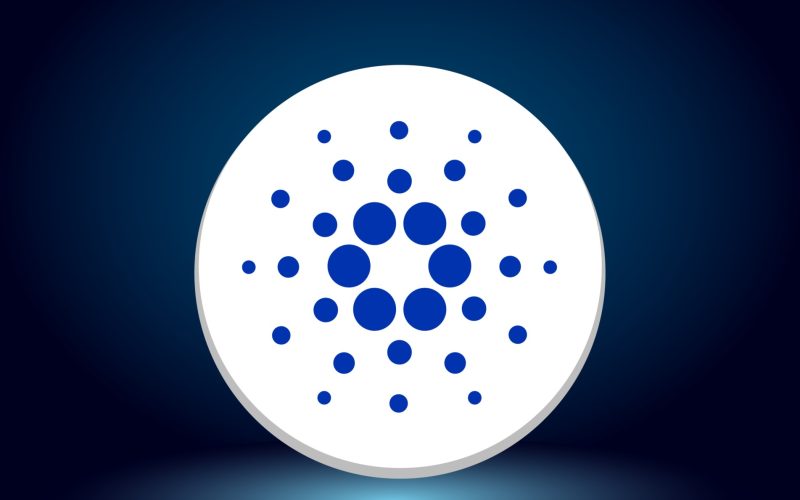Optimism (OP) has become one of the most promising Layer 2 solutions for Ethereum, designed to improve the scalability and usability of the Ethereum network. As Ethereum continues to face challenges related to high fees and network congestion, Optimism’s rollup technology provides a way to scale Ethereum while maintaining its core values of decentralization, security, and composability.
This post delves into the unique technology behind Optimism, its use cases, tokenomics, and why it could play a key role in the future of decentralized finance (DeFi), non-fungible tokens (NFTs), and other Ethereum-based applications.
What is Optimism? An Overview
Optimism is a Layer 2 scaling solution for the Ethereum network, using a technique known as Optimistic Rollups to process transactions more efficiently. By moving transactions off the main Ethereum blockchain (Layer 1) and onto a secondary layer, Optimism can achieve faster transaction speeds and lower fees.
Unlike Ethereum’s Layer 1, which requires every transaction to be recorded on-chain, Optimism bundles transactions together and submits them in a single batch to the main Ethereum network. This approach reduces congestion and gas costs while preserving Ethereum’s security and decentralization.
Key features of Optimism include:
- Reduced Gas Fees: Optimism can reduce transaction fees by up to 90%, making Ethereum-based dApps more accessible.
- High Throughput: By processing transactions off-chain, Optimism significantly increases Ethereum’s transaction throughput, allowing it to handle more users and applications.
- Security Inherited from Ethereum: Optimism leverages Ethereum’s robust security by submitting transaction batches to Layer 1, ensuring that the network is safe from malicious activity.
Optimism provides an important solution to Ethereum’s scalability issues, allowing developers to build applications that serve a broader audience without the high fees and slow transaction speeds associated with Ethereum’s mainnet.
How Optimism Works: The Power of Optimistic Rollups
Optimism’s technology revolves around Optimistic Rollups, a method that bundles transactions into “rollups” and processes them off-chain. This approach is called “optimistic” because it assumes that transactions are valid by default, without needing to execute them on-chain.
Optimistic Rollups Explained
In Optimistic Rollups, transactions are executed on Layer 2, and the resulting transaction data is submitted to Ethereum’s mainnet in a compressed format. The system assumes that all transactions are valid but allows users to challenge any suspicious transactions through a fraud-proof mechanism. If a fraudulent transaction is detected, the system reverts the transaction and penalizes the malicious actor.
Key benefits of Optimistic Rollups:
- Cost Efficiency: By only posting the transaction data and not the actual execution, Optimistic Rollups significantly reduce gas costs, making Ethereum cheaper for users.
- Scalability: Optimism can process thousands of transactions per second, a vast improvement over Ethereum’s current limitations.
- Security: Optimism’s reliance on Ethereum for finality means that it benefits from the Layer 1 network’s security, which is among the most secure in the blockchain space.
The Fraud-Proof Mechanism
The fraud-proof mechanism is crucial to Optimism’s security. It allows users to challenge any transaction that seems invalid, giving Optimism a strong security model. If a fraud is detected, the malicious actor forfeits their stake, maintaining trust in the system.
Optimistic Rollups provide a way for Ethereum to scale while minimizing trust in the Layer 2 system itself. By relying on Ethereum’s mainnet as a dispute resolution layer, Optimism ensures that user funds are secure even if the Layer 2 network is compromised.
Key Use Cases and Applications of Optimism
Optimism’s fast transaction speeds and low fees make it suitable for a wide range of applications, from DeFi protocols to NFTs and beyond. Some of the top use cases for Optimism include:
Decentralized Finance (DeFi)
One of the primary use cases for Optimism is DeFi. High fees on Ethereum have made DeFi applications costly for users, limiting access to lending, borrowing, and trading services. Optimism’s low fees open the door for more affordable DeFi services, allowing protocols to operate without passing high gas fees onto users.
Popular DeFi projects on Optimism include:
- Uniswap: The popular decentralized exchange has deployed on Optimism, allowing users to swap tokens with much lower fees than on Ethereum’s mainnet.
- Synthetix: This platform allows users to trade synthetic assets, giving them exposure to various real-world assets on the blockchain.
- Aave: The lending and borrowing platform has leveraged Optimism’s scaling solution to provide users with cheaper and faster lending services.
Non-Fungible Tokens (NFTs)
The NFT sector has experienced explosive growth, but high fees on Ethereum have limited its accessibility for smaller creators and collectors. Optimism’s low-cost transactions make it a viable platform for NFT creation, trading, and gaming applications.
Several NFT platforms are exploring or have launched on Optimism, enabling users to buy, sell, and create NFTs with significantly reduced transaction fees. By making NFTs more accessible, Optimism can support a broader range of artists and collectors, fueling innovation and growth in the space.
Gaming
Blockchain-based gaming has emerged as a high-growth sector, but the scalability and transaction speed limitations of Ethereum have created obstacles. Optimism’s fast transaction processing makes it well-suited for gaming applications that require real-time interactions, in-game asset trading, and other functionalities that are limited by Ethereum’s mainnet.
As more blockchain-based games look to provide seamless user experiences without high costs, Optimism could play a critical role in making gaming dApps mainstream.
Optimism’s Tokenomics and the Role of OP Token
The OP token is the native token of the Optimism network, designed to facilitate governance, incentivize network growth, and reward participants. Optimism has embraced a governance model that involves its community, ensuring that OP holders have a voice in the future direction of the network.
Governance and Voting
OP token holders participate in Optimism’s governance system, which allows them to vote on proposals for protocol upgrades, allocation of funds, and other key decisions. The governance structure aims to decentralize control of the network over time, ensuring that the community can influence its development and direction.
Incentives for Developers and Users
Optimism’s team has committed a portion of OP tokens to fund projects and reward developers building on the network. Through the Optimism Collective, developers and projects that contribute to the ecosystem’s growth receive OP token rewards, creating an incentive to develop high-quality dApps and drive network activity.
Additionally, Optimism rewards users for their participation in governance and network activities, creating a mutually beneficial ecosystem that incentivizes both developers and the community.
The Optimism Collective and Public Goods Funding
Optimism is pioneering a new approach to blockchain development with its Optimism Collective, a program dedicated to funding public goods and promoting an ecosystem aligned with open-source values. Through the collective, Optimism aims to support projects that benefit the broader Ethereum ecosystem and advance the goals of decentralization.
Retroactive Public Goods Funding
Optimism’s Retroactive Public Goods Funding (RPGF) initiative is a groundbreaking approach that rewards developers and projects for their past contributions to the ecosystem. Unlike traditional funding models, RPGF provides incentives to developers based on the value they have already delivered, creating a more sustainable funding environment for public goods.
By prioritizing public goods, Optimism seeks to create a culture of collaboration and innovation. This approach not only supports Ethereum’s long-term health but also encourages developers to build infrastructure that benefits the entire blockchain community.
The Optimism Foundation
The Optimism Foundation oversees the development and growth of the Optimism network, with a focus on supporting initiatives aligned with the platform’s mission of advancing Ethereum. The foundation is responsible for managing the collective’s funding and ensuring that resources are allocated to projects that create genuine value for the community.
Future Roadmap and Potential Growth for Optimism
Optimism’s roadmap outlines ambitious goals aimed at scaling Ethereum and making blockchain technology more accessible to the world. Key upcoming developments include:
Further Improvements to Rollup Technology
The Optimism team is continuously working to improve the performance and security of its rollup technology. By refining the Optimistic Rollup model, Optimism aims to increase transaction speeds, reduce costs, and enhance the fraud-proof mechanism. These improvements will make Optimism even more competitive and could drive broader adoption among developers and users.
Expanding the Ecosystem
Optimism’s growth is closely tied to the number of applications and developers building on its network. The Optimism Foundation is actively fostering partnerships and expanding the developer ecosystem, with a focus on DeFi, gaming, and NFT platforms. As more projects migrate to Optimism, the network’s value proposition will become stronger, attracting a larger user base and driving network activity.
Decentralizing Governance
One of Optimism’s long-term goals is to fully decentralize governance, transferring control of the network to the community. Through the OP token and the Optimism Collective, the team is gradually handing over decision-making power to token holders, aligning with Ethereum’s ethos of decentralization and open-source collaboration.
Why Optimism Could Play a Key Role in Ethereum’s Future
Optimism stands out as one of the most effective Layer 2 scaling solutions for Ethereum, offering a pathway to lower fees, faster transactions, and sustainable growth for the Ethereum ecosystem. By leveraging Optimistic Rollups, Optimism provides a powerful tool for developers and users, enabling a new generation of applications that were previously limited by Ethereum’s high gas costs and scalability issues.
With its focus on public goods funding, strong governance model, and commitment to advancing Ethereum, Optimism is well-positioned to become a central pillar of the Ethereum ecosystem. As Ethereum continues to evolve and expand, Optimism’s role will likely grow, providing the scalability needed for Ethereum to reach mainstream adoption.
Whether you’re interested in DeFi, NFTs, or blockchain-based gaming, Optimism offers a compelling solution that addresses many of the challenges facing Ethereum today. For investors, developers, and users alike, Optimism is a project to watch closely as it shapes the future of Ethereum and the broader blockchain landscape.








